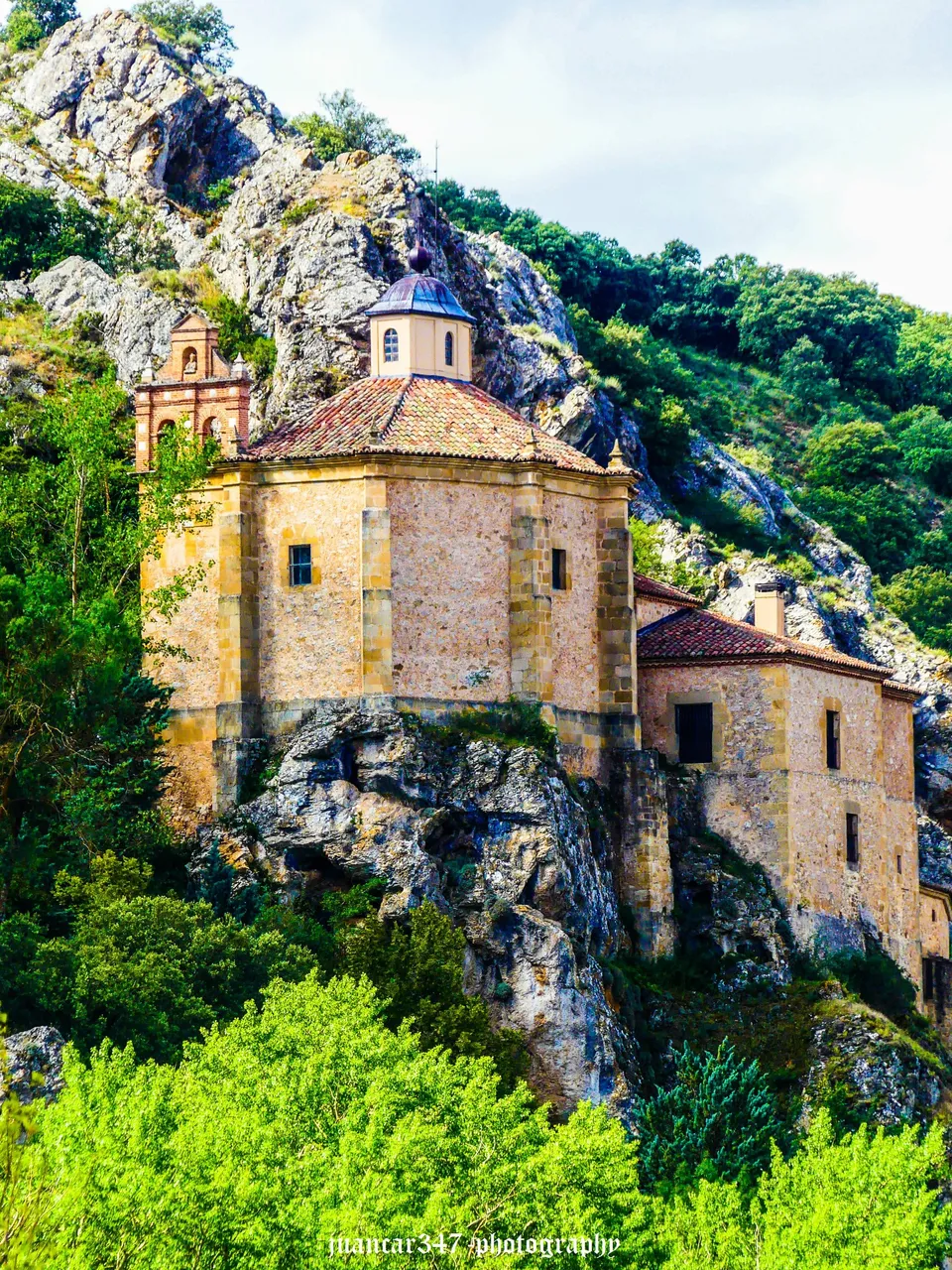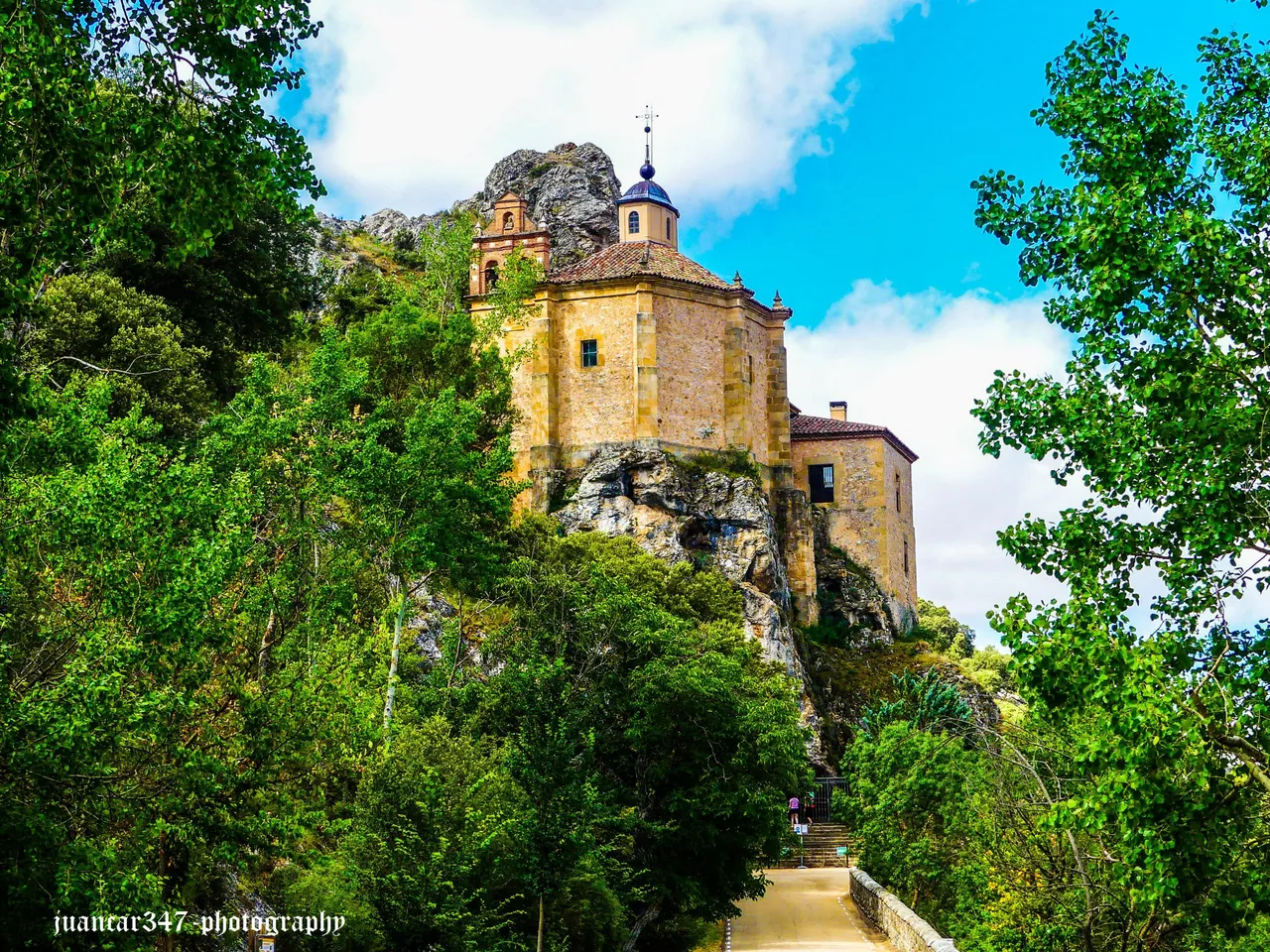
Hanging at the top of a mound filled with caves, in the emblematic place where, making a crossbow bow, the waters of the majestic Duero say goodbye with nostalgic parsimony to the sovereign city of Soria, also leaving behind the succinct charm of the Lovers’ Walk, in the bark of whose poplars there are still those initials that are names and those numbers that are dates and that so surprised a poet of the stature of Machado, a notable hermitage, preserved, in the interiors of its unique octagonal dome, a small artistic treasure, whose notable appeal should never question the expectations of any lover of Art and Mystery.
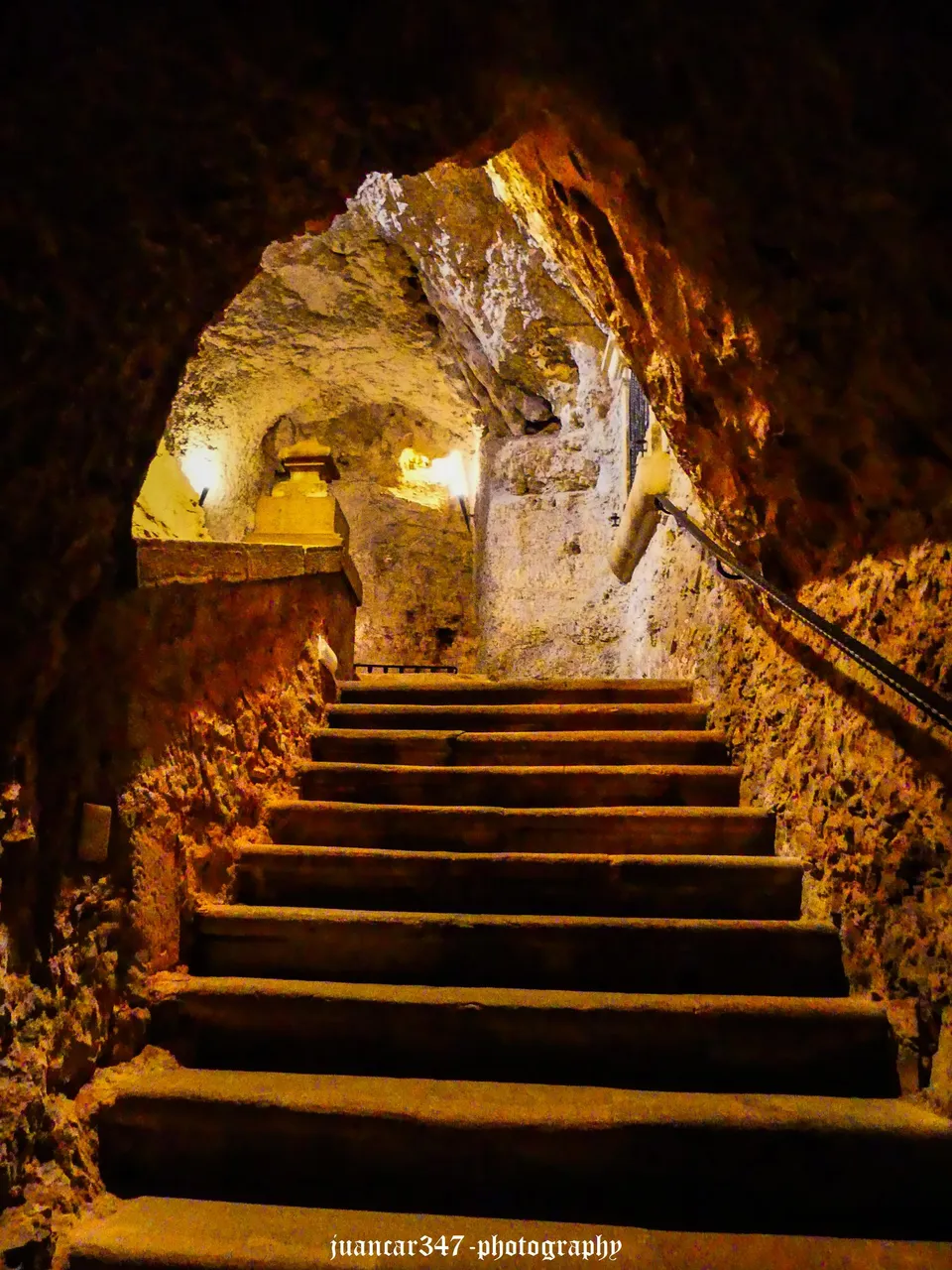
We are in the hermitage of San Saturio, an enigmatic hermit saint, Patron Saint of the city, whose remains, found in the tomb of a small chapel carved into the rock and dedicated to the figure of Saint Michael, have always been the focus of attention of thousand and one speculations, serving as a prelude between the lower world, through which the place is accessed, and that other upper world, which, in the shape of a dome, symbolizes the sky, where an artist of recognized sensitivity and considered the most representative painter of the Soriano Baroque, Juan Antonio Zapata, bequeathed to posterity some frescoes, impregnated with an enigmatic symbolism, where the world of hermitism, solitude and contemplation, confront that other world, socially exterior and alien to the sacrifices of the spirit, represented by the Devil and his most powerful weapon: temptation.
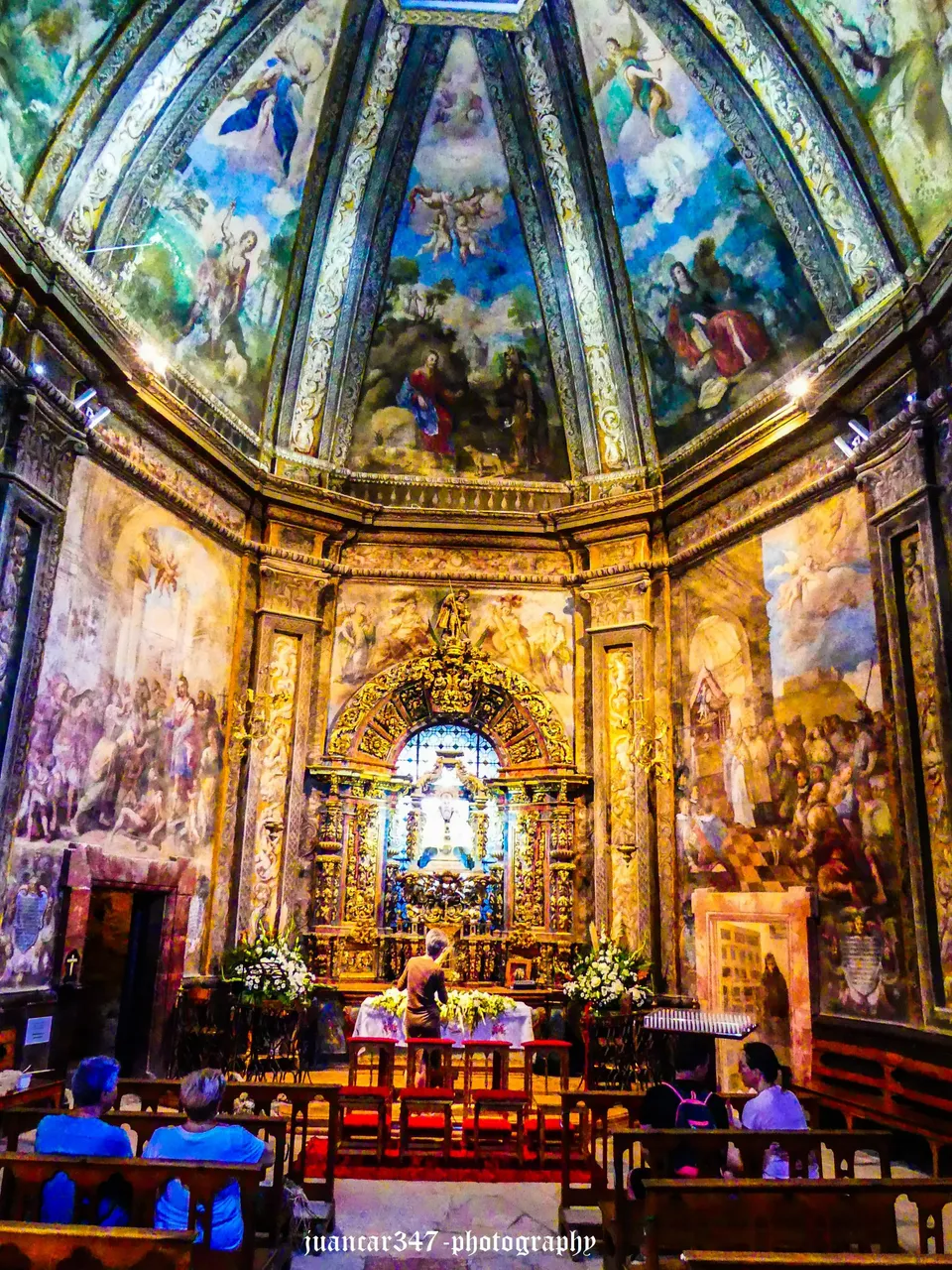
Colgada en lo más alto de un montículo interiormente horadado de cuevas, en el emblemático lugar donde, haciendo un arco de ballesta, las aguas del majestuoso Duero le dicen adiós con nostálgica parsimonia a la soberana ciudad de Soria, dejando atrás, también, el sucinto encanto del Paseo de los Enamorados, en las cortezas de cuyos álamos todavía están esas iniciales que son nombres y esos números que son fechas y que tanto sorprendieran a un poeta de la talla de Machado, una notable ermita, conserva, en los interiores de su singular cúpula de planta octogonal, un pequeño tesoro artístico, cuyo notable atractivo no ha de dejar nunca en entredicho la expectación de cualquier amante del Arte y del Misterio.
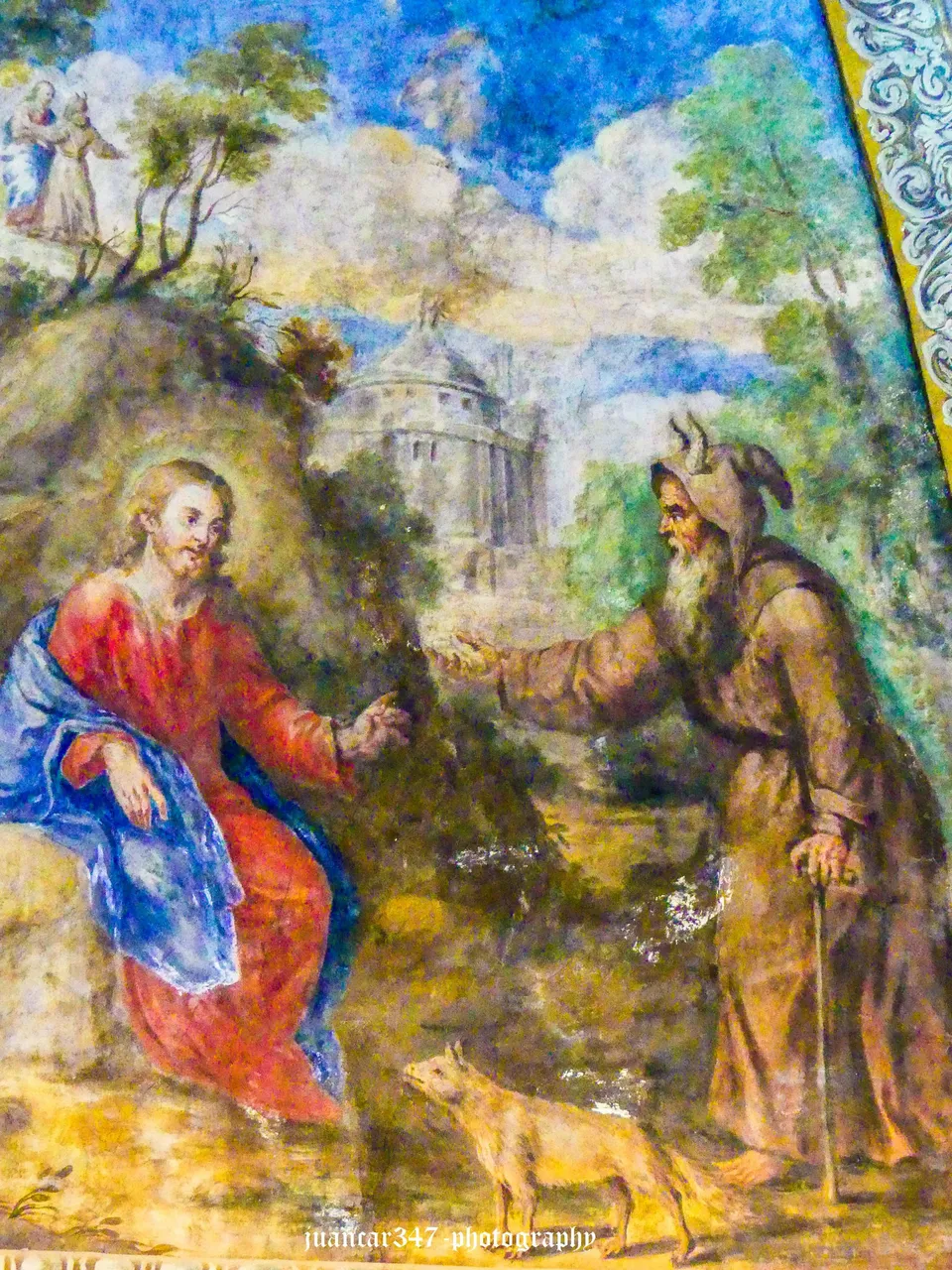
Estamos en la ermita de San Saturio, enigmático santón eremita, Patrón de la ciudad, cuyos restos, encontrados en el sepulcro de una pequeña capilla horadada en la roca y dedicada a la figura de San Miguel, han sido, siempre, foco de atención de mil y una especulaciones, sirviendo de preludio entre el mundo inferior, por el que se accede al lugar y ese otro mundo superior, que, en forma de cúpula, simboliza el cielo, donde un artista de reconocida sensibilidad y considerado como el pintor más representativo del Barroco soriano, Juan Antonio Zapata, legó a la posteridad unos frescos, impregnados de un enigmático simbolismo, donde el mundo del eremitismo, la soledad y la contemplación, se enfrentan a ese otro mundo, socialmente exterior y ajeno a los sacrificios del espíritu, representado por el Diablo y su arma más poderosa: la tentación.

NOTICE: Both the text and the accompanying photographs are my exclusive intellectual property and are therefore subject to my Copyright.
AVISO: Tanto el texto, como las fotografías que lo acompañan, son de mi exclusiva propiedad intelectual y por lo tanto, están sujetos a mis Derechos de Autor.
